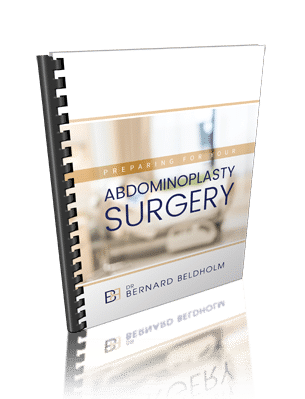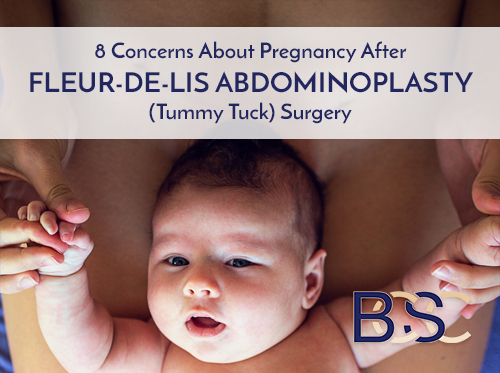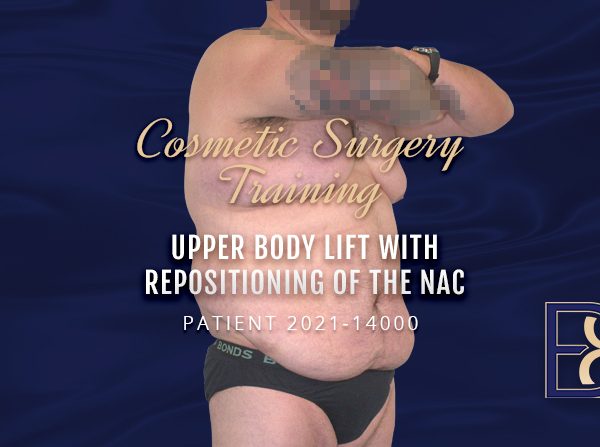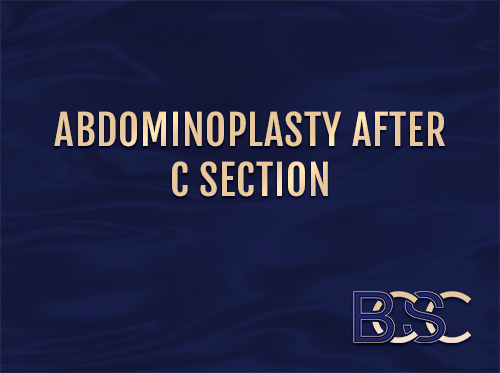Abdominoplasty After Bariatric Surgery
Abdominoplasty after bariatric surgery focuses on removing excess skin and tissue resulting from significant weight loss. It reshapes the abdomen by tightening stomach muscles, enhancing the patient’s appearance and health.
Besides ** aesthetics, post-bariatric abdominoplasty can also ** ** and mobility for patients, allowing them to enjoy the benefits of their weight loss achievements fully.
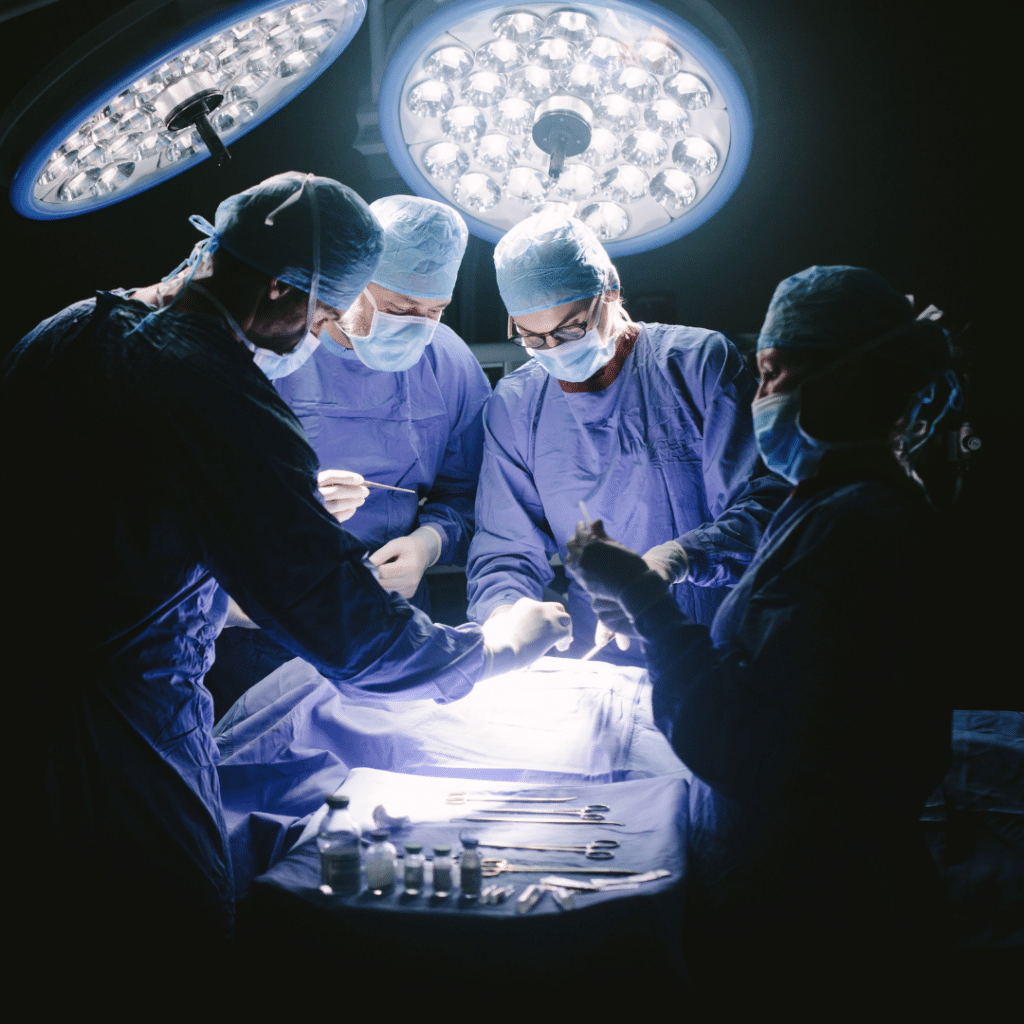
What is Bariatric Surgery?
Bariatric surgery is a procedure that ** severe obesity by helping patients achieve significant weight loss. It is a specialised intervention that involves surgical alterations to the digestive system, resulting in reduced food intake or decreased nutrient absorption. Bariatric surgery is believed to treat class III obesity and normalise one’s metabolism, including blood sugar, cholesterol, and blood pressure.
10 Different Types of Post-Bariatric Body Contouring Surgeries
After undergoing bariatric surgery, patients may be left with excess skin and tissue. Post- bariatric body contouring surgeries are procedures that can help remove this excess skin and reshape the body. The surgeries are highly specialised and tailored to each patient’s needs. They include:
- Abdominoplasty Surgery eliminates excess skin and fat from the abdomen while tightening the underlying muscles for a smooth and firmer abdominal contour.
- Mastopexy, also known as breast lift, reshapes and lifts the breasts to a firmer position by removing excess skin and tightening the surrounding tissue.
- Brachioplasty, or arm lift, targets loose or ** skin on the upper arms caused by significant weight loss.
- Lower body lift ** excess skin and tissue around the lower body, like the abdomen, hips, thighs, and buttocks, by lifting and tightening the skin for ** body contour.
- Liposuction removes stubborn fat pockets from the abdomen, thighs, hips, buttocks, and arms to ** body proportions and contours.
- A thigh lift (thighplasty) is designed to create a smoother appearance on the thighs by eliminating excess skin and fat while simultaneously lifting the remaining tissue.
- Circumferential body lift (360 degree lift, circumferential lipectomy) targets excess skin around the entire circumference of the body following significant weight loss for a more streamlined body contour.
- Face and neck lift (Rhytidectomy) ** the lower face and neck by lifting ** skin and muscles to reduce wrinkles for a more ** facial appearance.
- Buttock lift (Back lipectomy) ** buttock shape and contour by removing excess skin and tissue while lifting the remaining tissue for a firmer appearance.
- Combination therapy may benefit some patients who want multiple surgeries to ** different areas comprehensively.
What is Abdominoplasty?
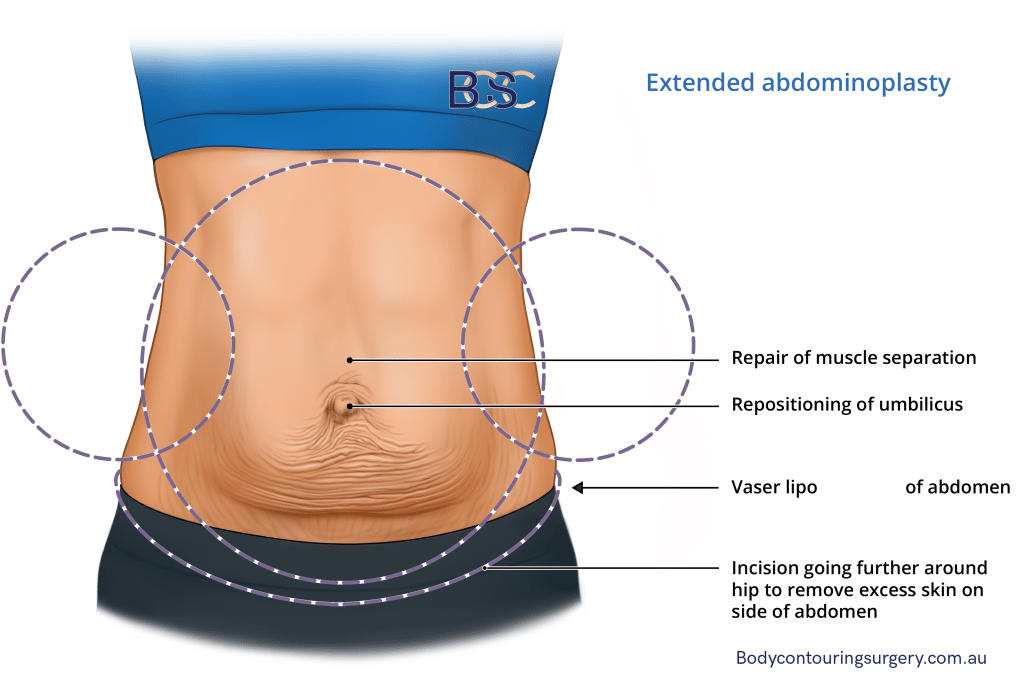
Abdominoplasty is a surgical procedure designed to ** the aesthetic appearance of the abdomen by eliminating surplus skin and fat and reinforcing the underlying muscles. This operation is especially sought after by individuals who have undergone substantial loss of excess weight following bariatric or gastric bypass surgery or through traditional methods like diet and exercise.
Reasons For Abdominoplasty After Bariatric Surgery
Dr Bernard Beldholm (MED0001186274) M.B.B.S, B.Sc (Moed) FRACS, Founder of Body Contouring Surgery Clinic, outlines the following reasons for abdominoplasty after bariatric surgery.
- Excess skin following bariatric surgery: A common issue with post-bariatric surgery is the presence of excess skin, which can be effectively removed through abdominoplasty to ** a smoother appearance.
- Redundant skin removal: Abdominoplasty ** the accumulation of redundant skin, ** patients’ aesthetic appearance and physical **.
- Post-bariatric body contouring: Abdominoplasty is a key component of post-bariatric body contouring, helping reshape and refine the body’s contours after weight loss.
- Abdominoplasty scarring: With advanced techniques and meticulous care for inconspicuous results, scarring can be minimised during abdominoplasty.
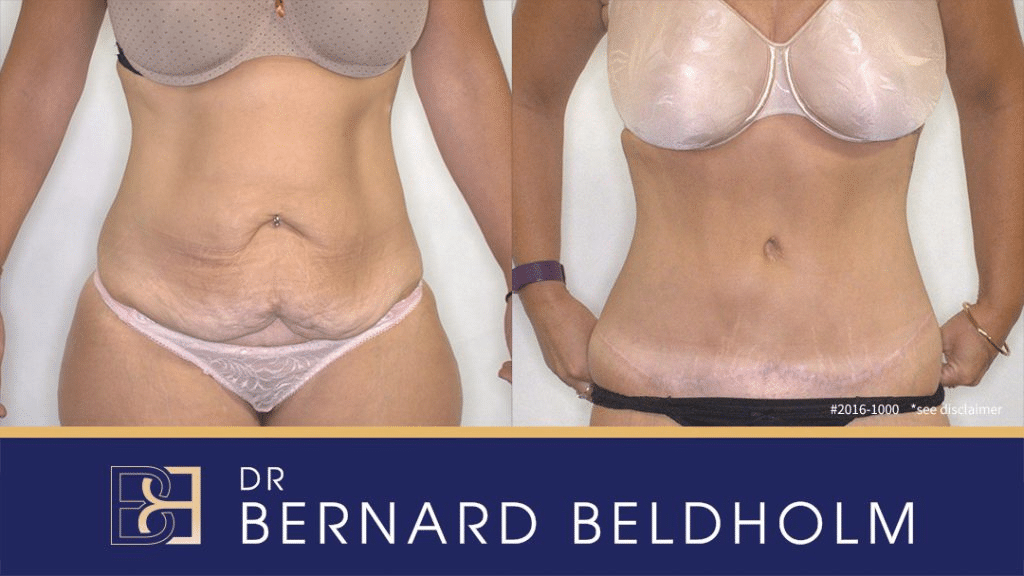
Disclaimer: Operation performed by Dr Bernard Beldholm. Adult content, surgery has risks; individual results vary, seek 2nd opinion. Please see the full disclaimer.
Benefits of Abdominoplasty
Abdominoplasty after bariatric surgery offers many benefits, including:
- ** abdominal contour: Abdominoplasty reshapes and contours the abdomen by removing excess skin and fat for a smoother, flatter look.
- Tightened abdominal muscles: The abdominoplasty procedure tightens abdominal muscles to ** muscle separation caused by pregnancy or weight gain.
- Reduction of excess skin: Abdominoplasty eliminates redundant skin, reducing skin laxity after significant weight loss or multiple pregnancies.
- ** waistline definition: Abdominoplasty creates a more defined waistline by removing excess tissue and tightening the abdomen.
- ** posture and core strength: Abdominoplasty surgery can ** posture and core strength by tightening abdominal muscles.
- Correction of umbilical hernias: Abdominoplasty repairs umbilical hernias by reinforcing weakened tissue around the navel.
- Reduction of stretch marks: Abdominoplasty can remove stretch marks on the lower abdomen that form due to weight gain.
Most Common Abdominoplasty Surgery for Post-Bariatric Patients
There are different abdominoplasty surgeries, each ** specific concerns and goals. The most common types include:

- Mini abdominoplasty. This less extensive procedure focuses on the lower abdomen when excess skin and fat are present. It is ideal for patients with mild to moderate skin laxity.
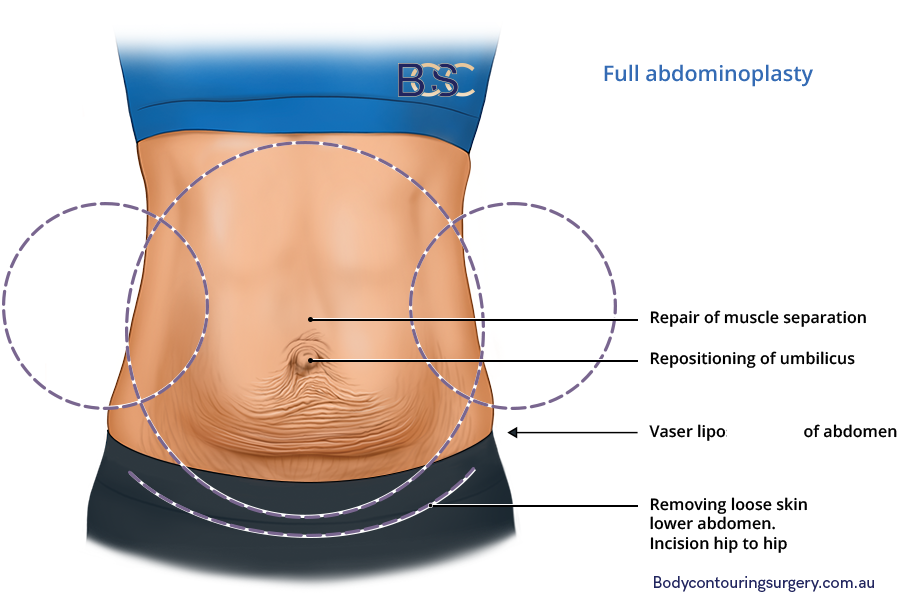
- Full abdominoplasty, or traditional abdominoplasty, is the most common surgery for post-bariatric patients. The procedure ** excess skin and fat from the entire abdominal area.
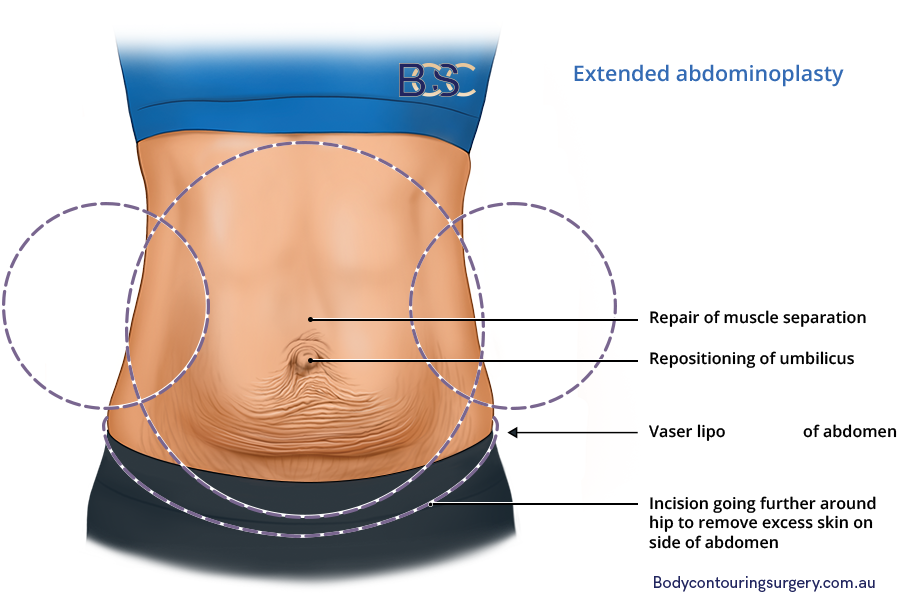
- Extended abdominoplasty extends the incision made in a full abdominoplasty to ** skin on the sides of the abdomen and lower back. The procedure is suitable for post-bariatric patients with significant weight loss as it removes excess skin and fat while tightening the abdominal muscles across a wide area.

Disclaimer: Operation performed by Dr Bernard Beldholm. Adult content, surgery has risks; individual results vary, seek 2nd opinion. Please see the full disclaimer.
- Fleur-de-Lis abdominoplasty is a specialised technique involving vertical and horizontal incisions. The procedure aims to remove excess skin in the upper abdomen, ideal for patients with redundant tissue horizontally and vertically.
- Reverse abdominoplasty targets the upper abdomen, lifting it upwards. It is often performed on patients who have previously undergone lower body lifts.
- Liposuction, while not an abdominoplasty technique, is frequently employed in conjunction with abdominoplasty to refine the abdominal contour.
Statistics To Consider
Knowing the different statistics of abdominoplasty after bariatric surgery helps patients make informed choices, ensuring optimal care and outcomes. Below are some of the statistics to consider:
- Prevalence of excess skin – As the number of bariatric surgeries increases, so does the occurrence of negative effects after significant weight loss, such as excess skin. According to research published by Springer Link, “90% of post-bariatric patients experience excess skin following significant weight loss.”
- Complication rates – A study published by Pubmed states that, “The overall wound-related complication rate was 51%. Most complications were minor, with only 4.3% being considered major. No significant differences in patient characteristics were found between patients with and without complications.”
- ** rates – According to a study by Science Direct, “In a retrospective analysis of 121 abdominoplasty patients, no deaths occurred. Complications included wound infection (3.3%) and tissue necrosis (1.7%). Abdominoplasty is generally **, with increased risk in diabetic and cardiovascular patients.”
- Quality of life – This study evaluates health-related quality of life (HRQoL) in post-bariatric surgery patients in Australia. The results were positive with the study stating, “Bariatric surgery followed by BCS may ** HRQoL for the patient when compared to bariatric surgery alone.”

Abdominoplasty Risks and Complications for Post-Bariatric Patients
Abdominoplasty has risks and potential complications, just like any other surgery.
- Delayed healing: Post-bariatric patients may experience delayed wound healing due to poor blood flow and nutritional deficiencies, increasing the risk of complications such as infection.
- Seroma formation: Post-bariatric individuals are more likely to develop seromas (fluid build-up under the skin) after abdominoplasty, which can lead to discomfort and require drainage.
- Higher DVT and PE risk: Post-bariatric patients have an increased chance of developing deep vein thrombosis and pulmonary embolism due to factors like immobility and obesity-related conditions, with abdominoplasty further elevating this risk.
How Common Is Redundant Skin Following Significant Weight Loss from Bariatric Surgery?
Excess skin after bariatric surgery is a common problem that many patients face. According to a study published by the National Library of Medicine, “Redundant skin following significant weight loss is a common occurrence affecting up to 96% of patients who undergo bariatric surgery, negatively impacting physical and psychosocial health and detracting from activities of daily living.”
Dr. Beldholm specialises in post-bariatric surgery and can offer customised solutions for removing redundant skin and achieving a more toned appearance after losing weight.
Waiting Period Between Bariatric Surgery and Abdominoplasty
It is recommended to wait 12 to 18 months after bariatric surgery before undergoing abdominoplasty. The waiting period allows the body to heal and stabilise after significant weight loss, reducing potential complications such as scarring.
Does Private Insurance Cover Abdominoplasty Surgery After Bariatric Surgery?
Private insurance coverage for abdominoplasty depends on policy terms, the patient’s health condition, and medical necessity. Insurance may cover the procedure if excess skin from bariatric surgery leads to functional limitations.
Does Medicare Cover Abdominoplasty Surgery After Bariatric Surgery?
Medicare may cover abdominoplasty surgery after bariatric surgery if the excess skin causes functional impairments or health issues that significantly impact the patient’s quality of life. However, patients must meet the criteria and provide evidence of weight related health problems, such as chronic rashes or skin infections that cannot be resolved without surgery.
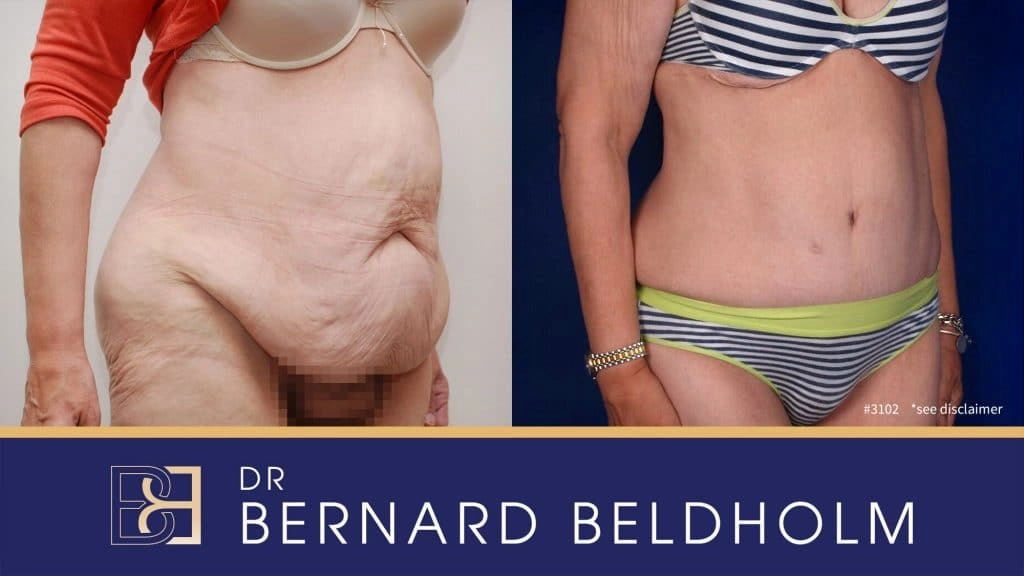
Is Abdominoplasty Considered Major Surgery?
Abdominoplasty is a major surgery that removes excess skin on the abdomen after major weight loss and tightens abdominal muscles. Recovery from abdominoplasty can be lengthy and may require specialised care.
How Long Is Abdominoplasty Surgery?
The length of abdominoplasty surgery may differ based on many factors, including the patient’s age, the complexity of the procedure, the patient’s unique anatomy and lifestyle, and whether other surgeries are being done simultaneously.
On average, abdominoplasty usually lasts around 2 to 4 hours. However, more involved procedures like Fleur-de-Lis abdominoplasty or combined surgeries could take longer. Patients should talk about the expected duration of their surgery with their specialist surgeon before the operation.
Is Abdominoplasty Just Cosmetic Surgery?
This procedure aims to remove redundant skin following significant weight loss and ** the abdomen’s appearance by tightening muscles and removing fat. In addition to cosmetic benefits, abdominoplasty can have functional advantages, such as treating abdominal muscle separation and reducing skin irritation.
Abdominoplasty Surgery Anaesthesia
Abdominoplasty surgery is commonly done under general anaesthesia, ensuring the patient is fully unconscious and pain-free during the procedure. Anaesthesia guarantees ** and ** for the patient throughout the surgery, allowing the specialised surgeon to perform the necessary steps of the abdominoplasty with accuracy.
Abdominoplasty Surgery Australia
In Australia, bariatric surgery patients often seek abdominoplasty to ** excess skin following weight loss. A qualified surgeon like Dr. Bernard Beldholm performs this post-bariatric surgery procedure to remove redundant skin and achieve a more contoured abdomen.
Is it Possible to Have More Than One Abdominoplasty Procedure at The Same Time?
Multiple abdominoplasty procedures can be performed simultaneously, especially for patients seeking more than a standard abdominoplasty. Combined or extended abdominoplasty, also known as post-bariatric body contouring, allows for the correction of various issues in one surgery, reducing recovery time and downtime for the patient.
However, Dr Bernard Beldholm (MED0001186274) M.B.B.S B.Sc (Moed) FRACS would recommend taking some time before undergoing another abdominoplasty procedure.
Will The Bariatric Surgery Scar Be Used for Abdominoplasty?
In some cases, the scar from bariatric surgery may be integrated into the abdominoplasty procedure, depending on its location and size. However, this decision is based on the patient’s anatomy, the type of bariatric surgery received, and the goals for the abdominoplasty.
If the bariatric surgery scar is in a favourable position, such as along the lower abdomen or within the area to be ** during abdominoplasty, it may be incorporated into the incision. Utilising existing scar tissue can reduce additional scarring and ** the aesthetic results.
Alternatively, if the bariatric surgery scar is unsuitable for the abdominoplasty incision or could affect the procedure’s outcome. In that case, a new incision may be created for the abdominoplasty.
Recovery Following Abdominoplasty Surgery
After abdominoplasty surgery, patients should expect a recovery period lasting 2 to 6 weeks. Recovery may involve temporary discomfort, swelling, and bruising, which can be alleviated with prescribed pain medication and compression garments. It is important to follow post-operative instructions from the surgeon to ensure proper healing.
Cost Of Abdominoplasty
The price of abdominoplasty in Australia can differ depending on factors such as the surgeon’s expertise, the extensiveness of the surgery, and additional costs like anaesthesia and post-op care. Typically, abdominoplasty in Australia costs AUD 8,000 to 15,000 or higher.
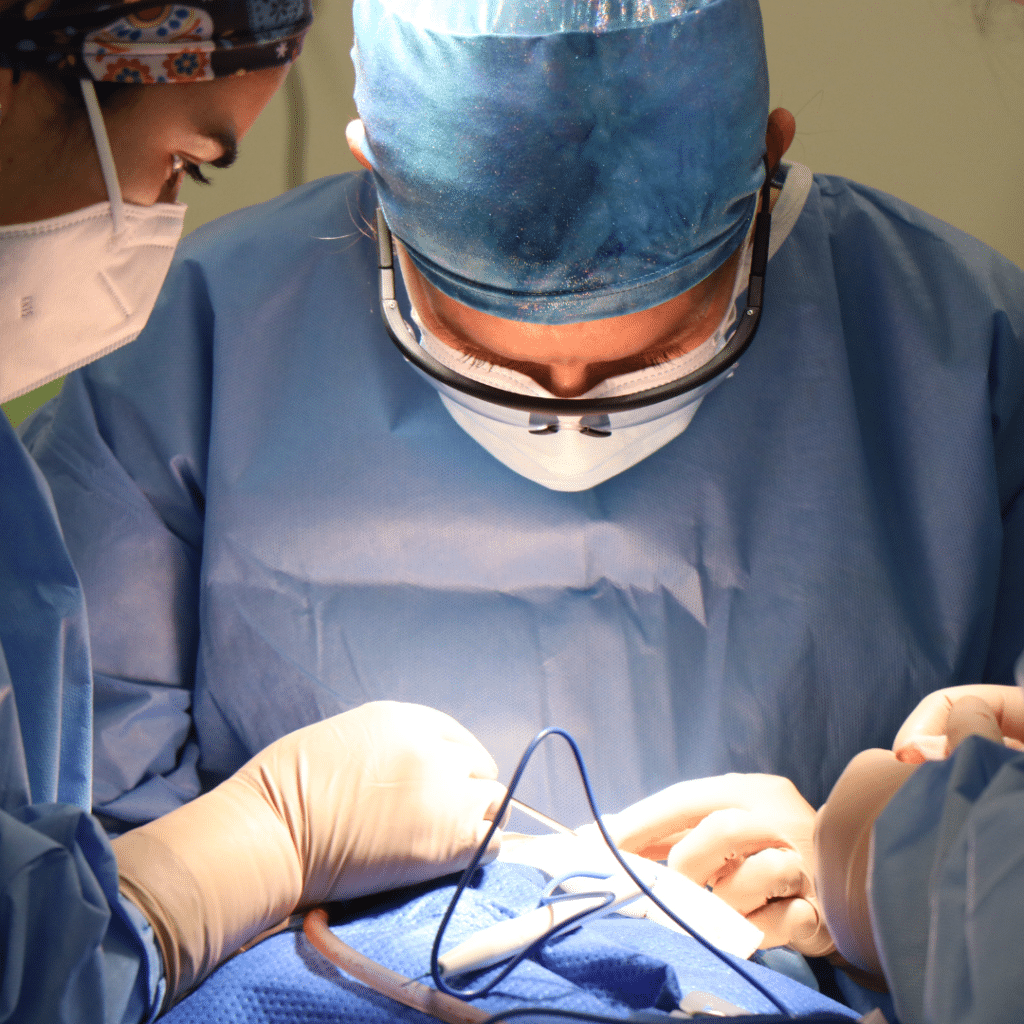
Reference
- Ockell, J., Biörserud, C., Staalesen, T., Olsén, M. F., & Elander, A. (2022). Physical measurements and patients’ perception of excess skin on arms and thighs before and after bariatric surgery. European Journal of Plastic Surgery, 45(4), 631–640.
- Makarawung, D. J. S., Nawas, M. A., Smelt, H. J., Monpellier, V. M., Wehmeijer, L., Berg, W., Hoogbergen, M. M., & Van Der Molen, A. B. M. (2022). Complications in post-bariatric body contouring surgery using a practical treatment regime to optimise the nutritional state. JPRAS Open, 34, 91–102.
- Hunecke, P., Toll, M., Mann, O., Izbicki, J. R., Blessmann, M., & Grupp, K. (2019). Clinical outcome of patients undergoing abdominoplasty after massive weight loss. Surgery for Obesity and Related Diseases, 15(8), 1362-1366.
- Barbaro, A., Kumar, A., Asokan, G., Green, L., Abdullah, I., Goel, R., Harries, R., Kanhere, H., Prowse, P., & Trochsler, M. (2023). Quality of life after bariatric and body contouring surgery in the Australian public health system. Journal of Surgical Research, 285, 76–84.
- Sadeghi, P., Duarte-Bateman, D., Ma, W., Khalaf, R., Pieretti, G., Ciccarelli, F., Harandi, H., & Cuomo, R. (2022). Post-Bariatric Plastic Surgery: Abdominoplasty, the State of the Art in Body Contouring. Journal of Clinical Medicine, 11(15).
- Brower, J. P., & Rubin, J. P. (2020b). Abdominoplasty after massive weight loss. Clinics in Plastic Surgery, 47(3), 389–396.
- Pilone, V., Tramontano, S., Cutolo, C., Vitiello, A., & Brongo, S. (2020). Abdominoplasty after bariatric surgery: comparison of three different techniques. Minerva Chirurgica, 75(1).
- Larsen, M., Plaisier, P.W. (2010). Complications in Abdominoplasty Patients After Bariatric Surgery. In: Shiffman, M., Di Giuseppe, A. (eds) Body Contouring. Springer, Berlin, Heidelberg.
- Sirota, M., Weiss, A., Billig, A., Hassidim, A., Zaga, J., & Adler, N. (2021). Abdominoplasty complications – what additional risks do post bariatric patients carry? Journal of Plastic, Reconstructive & Aesthetic Surgery, 74(12), 3415–3420.
